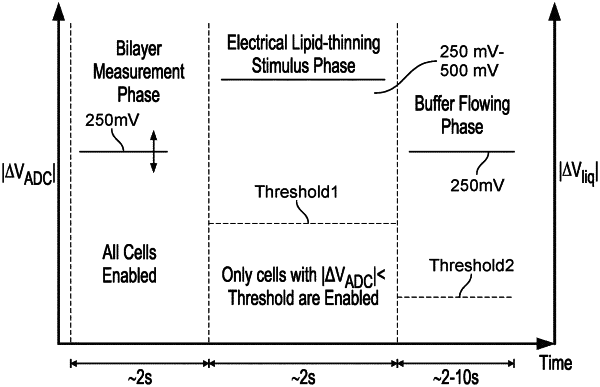| CPC C12Q 1/6869 (2013.01) [G01N 33/48721 (2013.01)] | 17 Claims |

|
1. A method of detecting whether a membrane has thinned in a cell of a nanopore based sequencing chip, comprising:
applying a first voltage across a membrane disposed between a working electrode and a counter electrode, the membrane electrically coupled with a capacitor;
periodically sampling a second voltage across the capacitor;
determining a change in the sampled second voltage across the capacitor in response to a change in the first voltage; and
detecting that the membrane has been thinned at least partially into a thin membrane based on the determined change in the sampled second voltage across the capacitor in response to the change in the first voltage, wherein the thin membrane has a thickness that allows a nanopore to insert into the thin membrane and form an electrical path between the working electrode and the counter electrode.
|